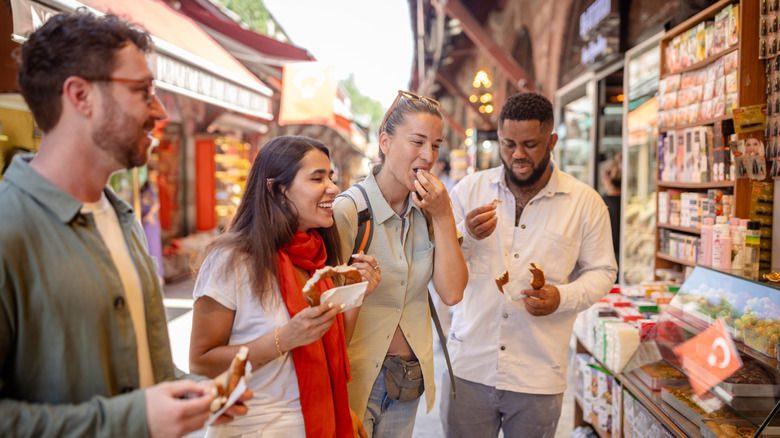One Thing Rick Steves Recommends To Find A Memorable Meal In Europe (And It's Not Reviews Or Michelin Stars)
There's no better person to ask for food recommendations than the locals who live in the area, and the same is true across the pond in Europe. Travel writer Rick Steves says to ditch the Michelin Guide and flashy Yelp reviews — yes, even if you're in San Sebastián, Spain, which features 20 Michelin-starred restaurants and a world-famous cheesecake. On his website, he says, "To have a memorable meal, you don't need to eat at a place with a Michelin star, wait in a long line, or use a website like TripAdvisor to tell you what's hot. All you need is a few trusty recommendations on where locals eat — just ask a hotelier or shop owner."
Instead of chasing viral hits or TikTok hotspots, Steves recommends asking real people on the ground: the market vendor selling jamón, the shopkeeper wrapping handmade soaps, the barista who just served your cappucino. They're the ones who know the true local gems, like the mom-and-pop shops that haven't been swallowed by tourist crowds. In fact, Steves most memorable meal was in Tuscany, and it was owned by an Italian family.
How to spot a delicious, authentic eatery while traveling
So, how do you know you've stumbled on one of these under-the-radar spots? There are a few subtle signs. For starters, the menu typically isn't overpriced. You're sure to find pricier items in Barcelona near La Sagrada Familia than you would at the local cafetería 20 minutes away from the iconic landmark. These are the types of places where you'll find locals with a cerveza and an espresso at 10 a.m.
Steves says to look out for handwritten menus in the native language. Using Barcelona as an example, these would be places handwritten in Catalan rather than Spanish or English. These spots usually serve a smaller, rotating menu based on what's fresh that day, not a laminated list of 100 options. Why? Because, as Steves mentions, their priority is serving regulars, not tourists passing through.
Timing matters, too. Steves notes that eating like a local often means syncing up with local meal times, and in much of Europe, that's later than you might be used to. If you walk by and the place is full of people chatting and lingering over lunch or dinner, take it as a nod in the right direction. Even Reddit users agree; one travel hack thread recommends asking taxi drivers where they eat or looking to see where construction workers line up for lunch. Those long lines mean good food at honest prices.

